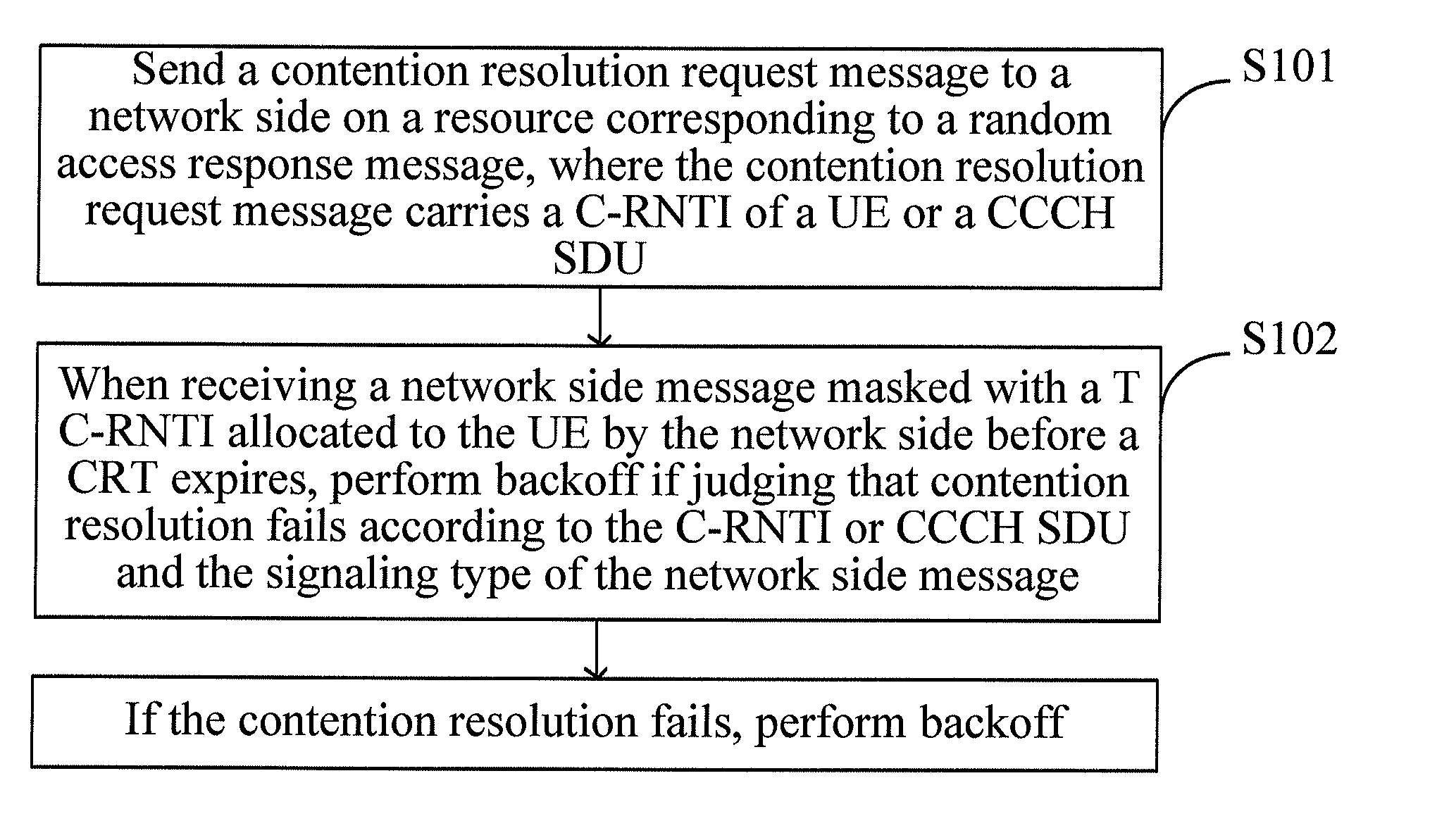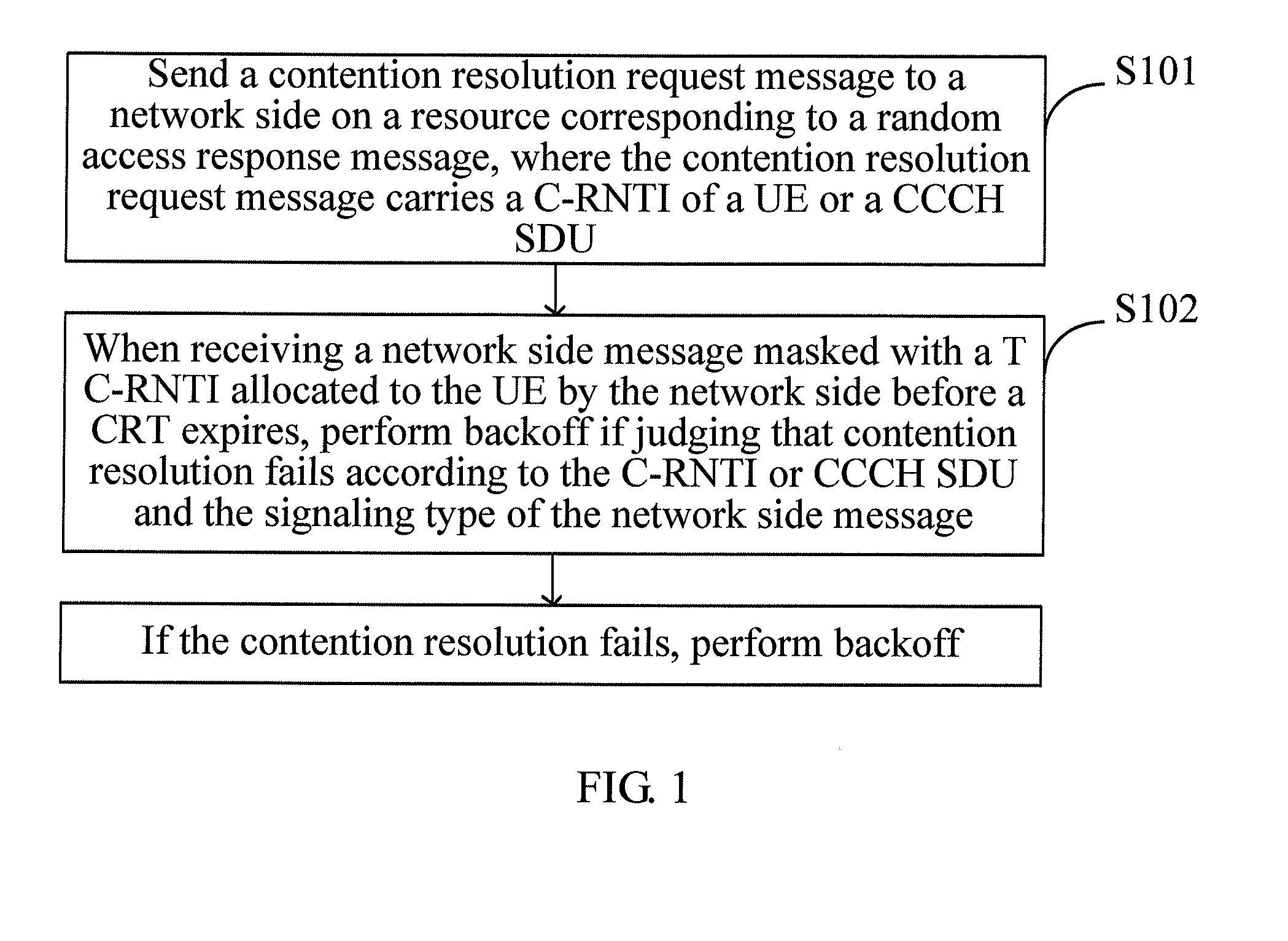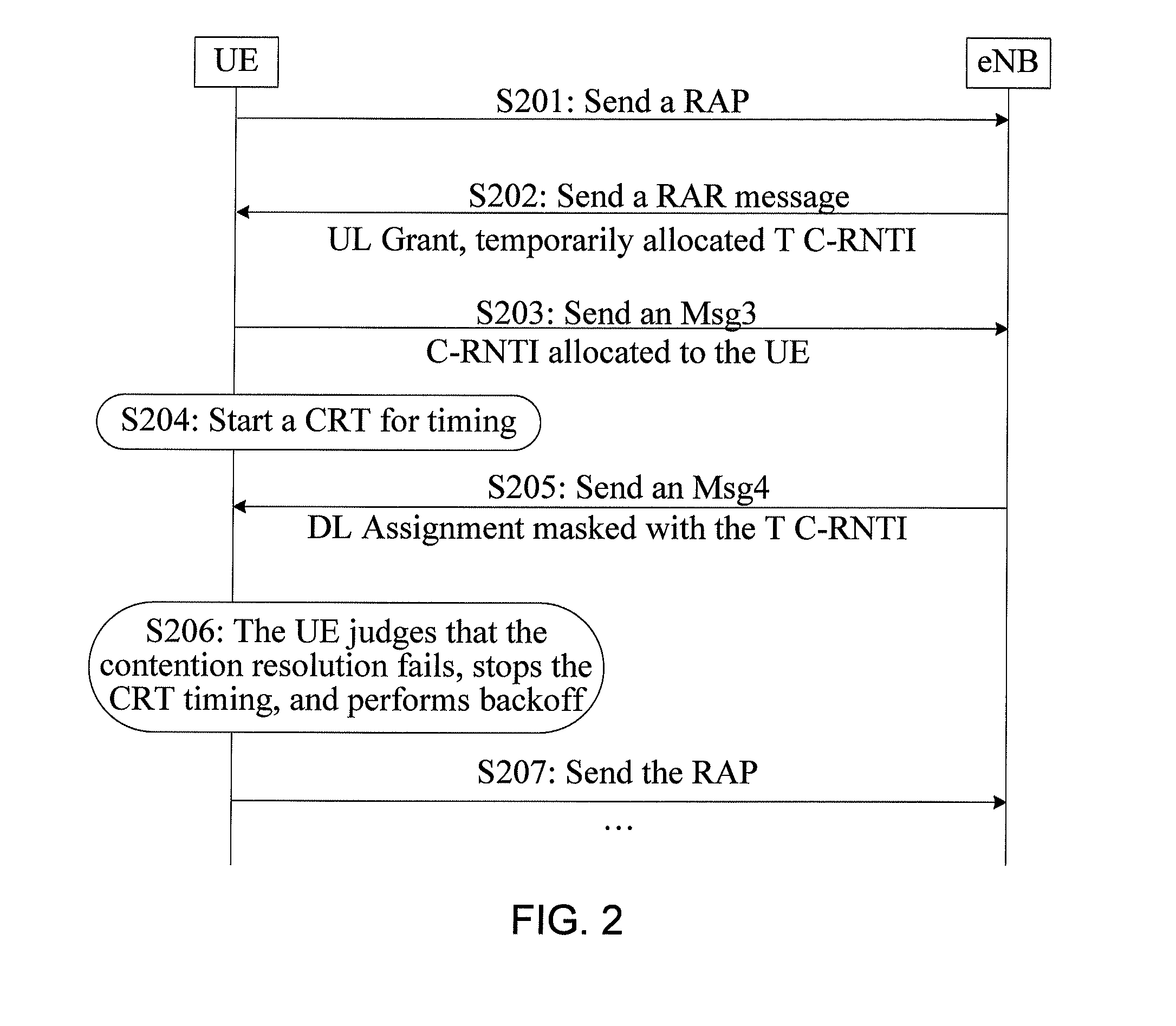Method, device, and system for judging random access contention resolution
- Summary
- Abstract
- Description
- Claims
- Application Information
AI Technical Summary
Benefits of technology
Problems solved by technology
Method used
Image
Examples
embodiment 1
[0037]As shown in FIG. 2, this embodiment may include the following steps:
[0038]S201: A UE initiates contention-based random access, randomly selects an RAP and sends the RAP to an eNB. Specifically, the UE may initiate the contention-based random access through a MAC or a PDCCH command.
[0039]S202: The eNB sends an RAR message to the UE, where the RAR message may carry UL Grant and a T C-RNTI temporarily allocated by the eNB to the UE.
[0040]S203: The UE sends a contention resolution request message Msg3 to the eNB on a resource corresponding to the UL Grant, where the Msg3 carries the C-RNTI allocated to the UE, where the C-RNTI allocated to the UE is used as a MAC control unit of the Msg3.
[0041]S204: The UE may start a CRT while sending the Msg3, and wait for the UL Grant masked with the C-RNTI and transmitted over new data or DL Assignment masked with the C-RNTI so as to achieve the contention resolution.
[0042]In the scenario where the MAC initiates the random access, the UE waits...
embodiment 2
[0049]As shown in FIG. 3, this embodiment may include the following steps:
[0050]Steps S301 to S304 are the same as steps S201 to S204 in the first embodiment.
[0051]S305: Before the CRT expires, the eNB sends the UL Grant masked with the T C-RNTI temporarily allocated by the eNB to the UE.
[0052]S306: The UE judges whether a HARQ (Hybrid Automatic Repeat Request, hybrid automatic repeat request) process used in the UL Grant is consistent with that used for sending the Msg3. If the HARQ process used in the UL Grant is inconsistent with that used for sending the Msg3, the UE considers that its contention resolution fails, stops the CRT, and performs backoff according to a related parameter.
[0053]In this step, the HARQ process used in the UL Grant is inconsistent with that used for sending the Msg3, and therefore the UE obtains the result indicating that the contention resolution fails.
[0054]S307: The UE resends a RAP after the backoff is performed for a period of time. The preceding ste...
embodiment 3
[0060]This embodiment is an improved solution obtained by combining various judging methods described in the first embodiment and the second embodiment. In this embodiment, contention-based random access is still initiated by a MAC of a UE or by a PDCCH command. Both of FIG. 4A and FIG. 4B are flowcharts according to this embodiment. The flowchart describes an entire flow mainly from a UE side. This embodiment may include the following steps:
[0061]S401: A UE sends a RAP to an eNB.
[0062]S402: The UE receives a RAR sent by the eNB, where the RAR carries a T C-RNTI temporarily allocated by the eNB to the UE.
[0063]S403: The UE initiates a contention resolution request message Msg3 to the eNB, where the Msg3 carries an allocated C-RNTI.
[0064]S404: After sending the Msg3, the UE starts a CRT for timing at the same time, intercepts a PDCCH, and performs contention resolution.
[0065]S405a: Before the CRT expires, the UE receives DL Assignment masked with the foregoing T C-RNTI and sent by th...
PUM
 Login to View More
Login to View More Abstract
Description
Claims
Application Information
 Login to View More
Login to View More - R&D
- Intellectual Property
- Life Sciences
- Materials
- Tech Scout
- Unparalleled Data Quality
- Higher Quality Content
- 60% Fewer Hallucinations
Browse by: Latest US Patents, China's latest patents, Technical Efficacy Thesaurus, Application Domain, Technology Topic, Popular Technical Reports.
© 2025 PatSnap. All rights reserved.Legal|Privacy policy|Modern Slavery Act Transparency Statement|Sitemap|About US| Contact US: help@patsnap.com



